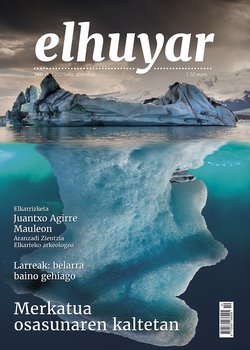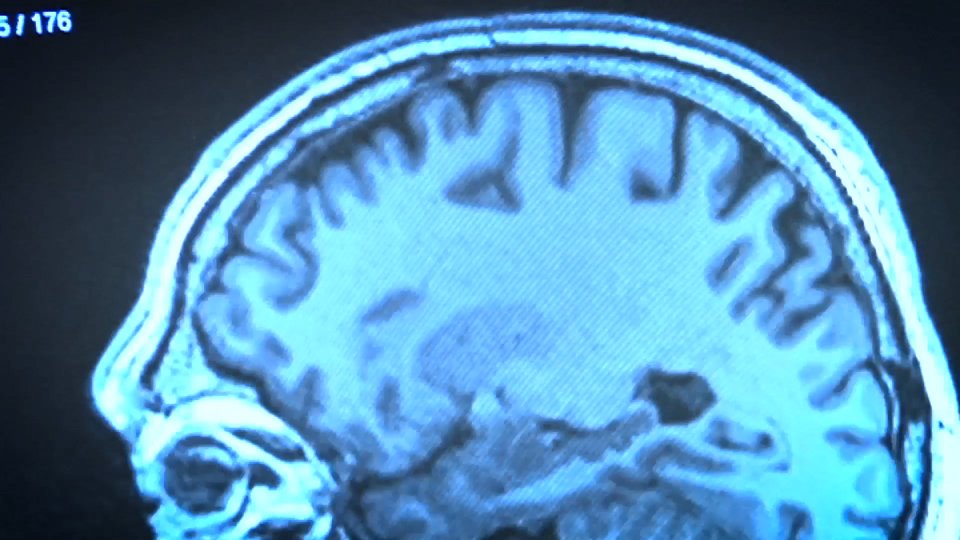Agustín Sánchez Lavega: "Looking away to know better the near"

Although the subject that corresponds to him in the UPV-EHU is that of Applied Physics, he has long worked on topics of Astrophysics, he has come to form a research group.
Since 1990 I have worked mainly on two topics. One of them is the planets. Little by little, and with much effort, we have managed to create a research team financed by the university itself.
On the other hand, I also investigate how heat spreads during a time in the matter. This topic is very related to the theme of the planets. At this time, for example, we are investigating how heat spreads within the planets. These topics have led to the reading of five doctoral theses and the appearance of many others.
Your most outstanding work was done in 1990, they studied the storms of Saturn. The journal Nature, in addition to the article, also offered cover.
The scientists of the atmospheric dynamics of the giant planets barely paid attention until then. In 1981 the spacecraft Voyager approached these planets. Then we barely knew anything about them. With the Voyager ships much information was obtained in Saturn, but only three months.
In addition to analyzing this information, for many years we analyzed the images obtained through the telescopes and found a giant storm. As Saturn is so changing, when the Voyagers were there they did not see storms because then there were no storms. We study the phenomenon, look at evolution and model the phenomenon.
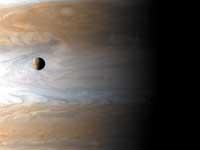
When the giant storm broke out in 1990, we were the only ones who could systematically continue with the French. We publish the work in Nature, with international repercussion.
Why did Saturn and Jupiter begin to investigate?
When I began to look at the planets with the telescope, Jupiter looked at the height of our house. I saw the bands of Jupiter and wondered what it was going to be. As a young man I was curious about what is seen there.
What can you see?
In Jupiter many things are seen: mists, red spot, various weather structures… In Saturn, however, no. Rings are seen, but the back is always pale.
When in astronomy we write about Saturn we speak of white spots, bright white spots, which caught my attention. I began to observe the books to know how Saturn has been seen throughout history. I realized that these white spots appeared several times and appeared with a certain frequency. The American astronomer Asaph Hall, who made the first description of a great storm on Saturn in 1876, discovered the two satellites of Mars.
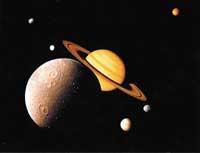
He published the news about the storm in the media of the time, but as I wanted to know more, I went to the United States Maritime Observatory, where Hall worked. They sent me a copy of their manuscripts and from there I obtained a lot of information about how the storms of Saturn are structured. Thus began the subject of storms.
The objective of this work is to know in more detail the meteorological incidents. Jupiter and Saturn resemble little to Earth. To know what happens in these planets serves to know better the climate here?
Astronomy should not be found to be useful, even if it has had it throughout history; for example, navigators have used astronomy to guide ships. If you ask yourself what literature, art, or philosophy serve, the answer is knowledge. Therefore, astronomy, in principle, fulfills the function of satisfying the curiosity of the human being. The origin of the universe, the possibilities of finding life out of here… are topics that everyone talks about.
In addition, astronomy has a practical aspect. Astronomy uses cutting-edge technology and forces technology to be at the last because it wants to look at the most distant and the smallest things. For this purpose, new giant telescopes are built and the technology used has an application on Earth.

Something similar happens with the investigation of the atmosphere on the planets, people believe that this work has no practicality. We understand more or less the operation of terrestrial meteorology, but prediction or good knowledge of the hole or greenhouse effect of the Child or the ozone layer generates problems. These phenomena also occur on other planets with very different conditions.
Any advance in the knowledge of atmospheric dynamics will help us to know how the mists occur, what type of greenhouse effect are produced, how the swirls are formed at the poles of these planets, for example, how a swirl occurs that has a great influence on the hole of the ozone layer. With all this we will not fully understand the meteorology of the Earth, we will not make more accurate predictions within a month, but we will better understand how terrestrial meteorological systems work and, in addition, in completely different conditions.
Since 1995 we know that there are exoplanets. And most of these planets are similar to those of Jupiter. So, for the moment, we have known everything we know about these planets since the investigation of Jupiter. That is the practicality of this research work.
However, above all this there is the same knowledge, since without basic science there is no applied science.

I expected a response like this, but when I ask him the question I was referring to selecting Saturn and Jupiter to perform research, rather than research. And it is that other planets look more like Earth. Why Saturn and Jupiter?
There are two types of planets: the tellurics, which have some soil, and the giant planets, which do not have that characteristic, the gas spheres. The choice of these planets, in our case, has been a consequence of historical reasons. Start watching and… Start to ask What happens there? There is a lot of interest to investigate, NASA itself has sent now to Cassin. It is clear that there are more people studying other planets, especially Mars. We are investigating giant planets because we do not know how they work and want to know, there is no other special reason.
He has mentioned Mars. In astronomy is the star of research. There are the plans to go, the possibilities of territorial formation… do you see this possible?
We are still quite far away. Mars is a very changing planet, with great differences between zones and others. To know if you ever lived on Mars, a systematic exploration is needed. It is not enough to go to a place, land and investigate, you have to go to many places and bring samples. For all this it takes many years. The sending of man to the place, from the current point of view, is a very difficult task: it is an expensive trip, Mars is far away, the journey in the best conditions has been two years, you have to overcome many problems of health and food… it is very difficult. There are also psychological problems, because it will not be easy to stay two years in space. People talk about 50 years old, but it seems too fast to me. If it is difficult to arrive, the next step is territorial training. That's something of science fiction today. Ethically I don't know if we should. If the species has to be to last I do not see it badly, but technologically I do not think it is in our hands.
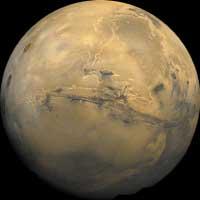
People think you spend the whole day looking at the firmament. We come to speak with you and see you working before computers. How is your daily work?
We work with the computer. When we do not have telescopes, we use other data sources. We have collaboration agreements with managers of the French observatory Pic du Midi. There they have a large telescope, with a mirror meter, and their mission is to look at the solar system. However, to perform fine work we use the telescopes located in the Canaries or Almeria, and we can also use the Hubble Space Telescope.
To do this, we collaborate with an American research group. Finally, we can also use files from spacecraft. With all this, we analyze all the data through computers and then elaborate models. At the moment we have work agreements with two French groups and five other labor or research agreements with American groups, including a group from NASA.
In Nature published a long article, he has also published a couple of articles in Science and smaller ones in specialized journals. Is publishing essential?
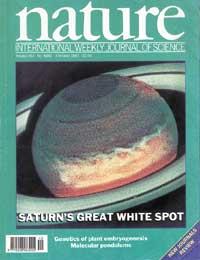
The scientist is aware that the publication of the results of his work in magazines of his area is not very difficult if it is a job well done. But, as in football, there are also categories here, there are regional, primary and champions league teams. The most leading journals in science are very varied topics. Both Science and Nature reach people outside the personal sphere, and it is very important that someone outside of it knows personal work.
In any case, from a scientific point of view, the most important thing for those who research is to publish it in the most cutting-edge magazine in their area, because it means that you are in the foreground. From there come invitations to congresses, offers of conferences or proposals of writing of books. He is now writing a book about Jupiter, a giant book that collects information about Jupiter among many researchers who have studied this planet. And there, for example, we have to write a chapter of dynamics. This means that we have reached the highest level we could achieve, because it means that our work has international recognition. The publication is not essential, but it is important.
Have you tried many times to publish in leading journals?
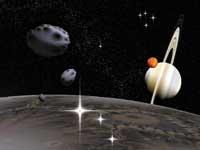
No. When Nature gave me the skin I hardly knew the magazine. It was the year 90, four years after finishing the thesis, he was only a naive young man. I thought how naive it was, because I sent the article. In Nature they publish articles of a couple or three short numbers and letter. When I realized that in addition to publishing the article they gave him the cover, for me it was a surprise. Then I realized what it is really to publish in Nature when I started receiving calls from the New York Times, BBK, etc.
You have published in Nature and Science, they have called you from great media, congresses, books… and who knows Agustín Sánchez Lavega in Euskal Herria?
My intention is not to be famous. Within the university our group is known and has recognition. Of course, in addition to the research work, you have to do a marketing job: go to congresses, make dissemination, give lectures… but I want to do my job and, in addition, if my work arouses the attention of the people, better, but it is not that the goal.
Sánchez Lavega
Agustín Sánchez Lavega was born in Bilbao in 1954. When man came to the Moon, in 1969, a new world was opened to Augustine. “For me it was a kind of revelation,” he says, “I realized that the universe was also there.” He saved money and managed to buy a small telescope. With this telescope still preserved, he first discovered the planets. “Then Mars was very close to Earth and I could follow the sandstorms until they hid the face of Mars. I also saw Jupiter and Saturn, and he marked me.”

Agustín Sánchez Lavega decided to study physics because he wanted to study Astrophysics. These studies could only be carried out in the State, Barcelona and Madrid, and “Astronomy was very mathematical, since it hardly existed as a subject of Astrophysics”. In 1973 he began to study physics. At the end of his studies he was offered a scholarship at the Max Planck Astronomy Institute in Heidelberg. For military service, he lost the opportunity to take the fellowship. After finishing military service, without a scholarship, Max Planck offered him a post at the astronomical observatory of Calar Alto in Almeria. He started working in 1980 and worked for seven years. At that time, the astronomical observatory of Calar Alto was one of the best in Europe, with the best tools and the best telescopes.
Sánchez Lavega acknowledges that during his stay in Calar Alto he studied a lot, astrophysics there. He also completed his doctoral thesis. In 1986 he presented his thesis at the University of the Basque Country, the atmospheric dynamics of Saturn, first thesis based on the astrophysics of the UPV. Special mention, not only in the university, but also in the media.
Tired in Almeria, where he spent fifteen days and fifteen others in Bilbao, he came to the University of the Basque Country, where he managed to make room at the School of Engineering of Bilbao in Applied Physics. In 1994 he obtained the chair.
From Earth to the giant planets and then out of the galaxy
The team of Sánchez La Vega has been investigating Saturn and Jupiter for many years from different perspectives. One of them aims to explain the atmospheric circulation of both planets. At this moment there are two theories in force: one says that the accumulated heat inside the planet is slowly dispersing out; the other, that the source of energy is solar radiation, as on Earth. If the internal mechanism is true, the winds should be stable over time, unalterable to the changes of the seasons, and it seems like that. However, in Saturn there are changes in the equator, so it is possible that the influence of solar radiation is important. They expect this research to be published before the Cassini boat arrives in Saturn and can be confirmed by Cassin.
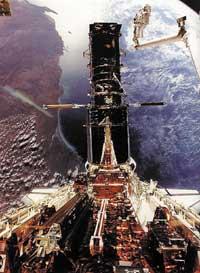
On the other hand, it is trying to explain meteorological phenomena. Anticyclones, weather depressions, convective storms and waves that extend into the atmosphere, as well as on Earth, are also found Jupiter and Saturn. The team investigates the trailers as the red spot of Jupiter. How can the giant swirl like the red spot form in the turbulent atmosphere of Jupiter? And how does it remain undisappeared? He is at least 300 years old. On Earth, the strongest anticyclones and storms last as long as a month.
Based on convective storms, it's about responding to one of the great mysteries of Jupiter and Saturn, that is, how much water is there? Water cannot be detected, but they believe it must be under the clouds. In fact, to structure these storms, there must be some fuel and the best raw material of storms is water. That is why they believe that in some latitudes of these planets there must be plenty of water.
Ondulatory phenomena have also been studied to know the influence of waves that propagate into the atmosphere in the meteorology of these planets. After analyzing these waves and transferring the consequences to Earth, the influence of waves on local meteorology can be known. For example, until recently it was thought that the troposphere and stratosphere were well separated due to thermal investment, while today it is known that what happens in the troposphere has a great influence on the stratosphere and vice versa. Something similar occurs on these planets.

They study the hot spots of Jupiter, the hot spots. These zones are completely different, the processes are produced backwards, the hot and humid air to form a storm, instead of going up, moves down. This does not exist on Earth and the research team of Sánchez Lavega wants to know why they are formed in Jupiter.
The research work will continue with Uranus and Neptune. Together with the other two, the planets are colder and the clouds are not equal, they are formed by methane, not by ammonia. Neptune has a very rich atmospheric dynamics and no one knows why, since it gets much less heat than Jupiter and the inner source of heat is much weaker. However, the variety of phenomena is surprising. To investigate all this wealth, they have signed a collaboration agreement with astronomers at the Canarian Institute of Astrophysics to begin making observations. On the other hand, they have also begun to investigate the exoplanets in order to gradually define their characteristics. The next project will be about it.
Buletina
Bidali zure helbide elektronikoa eta jaso asteroko buletina zure sarrera-ontzian


